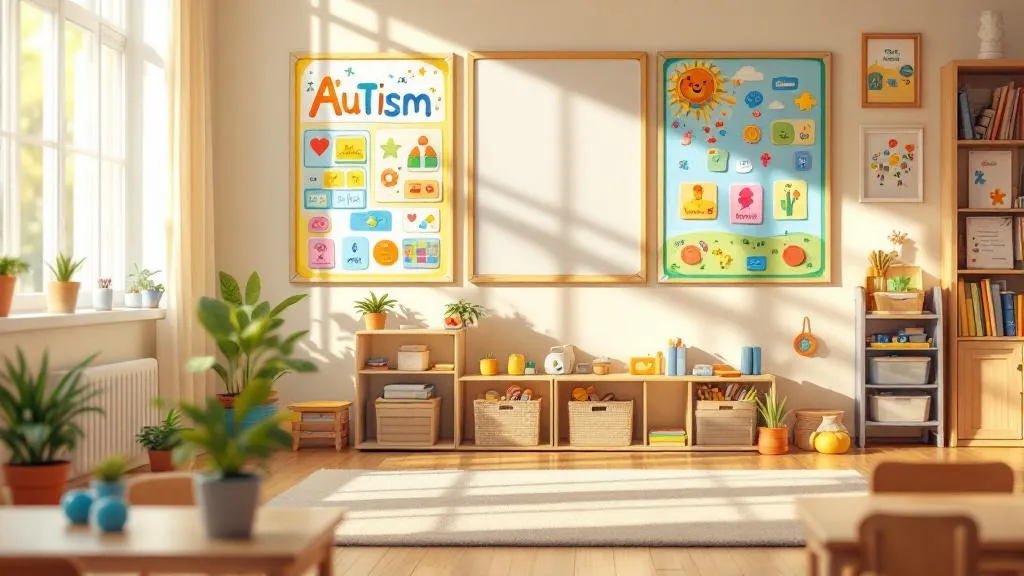How ABA Therapy Helps Develop Imitation Skills in Young Children
Unleashing Potential: ABA Therapy's Role in Nurturing Imitation Skills in Children

Introduction to Imitation Skills in ABA Therapy
Imitation is a cornerstone of child development. It shapes the foundational blocks for acquiring language, social skills, and cognitive abilities. This is especially pertinent for children with Autism Spectrum Disorder (ASD), who often exhibit deficits in these areas. Applied Behavior Analysis (ABA) therapy plays a critical role in enhancing imitation skills, thereby promoting better learning and development outcomes. This article explores how ABA therapy employs structured techniques to foster imitation skills in young children, particularly those with ASD.
The Role of Imitation in Child Development

What is the importance of imitation in child development?
Imitation serves as a cornerstone in child development, enabling children to gain a range of skills that are crucial for their growth. Through the act of mimicking, young learners absorb new skills, language, and social behaviors. Researchers highlight that the frequency and quality of imitation observed in a child's early years—especially during the first two years—strongly correlate with later abilities in language and social interaction.
Imitation is pervasive in various learning contexts. Children not only learn through observing others but also through being imitated themselves by caregivers. This reciprocal dynamic enhances their understanding of relationships and social norms. Moreover, when children imitate, they are not merely copying actions; they partake in a form of social interaction that fosters emotional connections and bonds with others.
How does imitation connect with language and social skills?
Imitation is an essential tool for language acquisition and social skills development. For instance, when children replicate sounds, words, and facial expressions, they build foundational language skills that influence communication. This mimicking helps refine their pronunciation and fluency as they learn to express themselves effectively.
Additionally, through joint attention—where both child and caregiver focus on the same activity—children develop vital social cues, enhancing their ability to understand and engage in conversations. This skill is fundamental for effective social interactions as it includes turn-taking, sharing, and conveying emotions.
Is imitation a communication tool?
Absolutely, imitation not only promotes cognitive development but also acts as a vital communication tool. By imitating verbal and nonverbal behaviors, children learn to convey intentions and emotions, reinforcing their social interactions. This twinned process of observing and mimicking aids in memory formation and attention, laying the groundwork for more complex language and social exchanges in the future.
In nurturing environments, children flourish in their ability to learn through imitation, underscoring the importance of positive role models. Hence, fostering an atmosphere conducive to healthy imitative behaviors can significantly impact a child’s overall development.
Learning Through Observation in ABA Therapy

How do young children learn behaviors through imitation?
Young children learn behaviors through imitation by observing and listening to those around them. This process, known as observational learning, is vital for their development. For instance, children often replicate actions modeled by parents or peers, absorbing social cues and communication skills along the way.
In ABA therapy, reinforcement plays a significant role in this process. When children witness someone being rewarded for a behavior, they are more likely to imitate that action, a phenomenon rooted in positive reinforcement. For example, if a child sees a peer receiving praise for sharing, they may be encouraged to mirror that behavior in hopes of receiving similar acknowledgment.
However, it’s not just positive reinforcement that shapes behaviors. Children can also pick up less desirable actions, such as aggression, through the same observational process if they see these behaviors modeled by others and rewarded in some contexts, such as in media. Therefore, it becomes essential for parents and caregivers to curate a positive environment that promotes constructive role models to foster beneficial imitation.
With this understanding, using ABA strategies such as structured play and positive reinforcement not only teaches children necessary skills but also guides them towards successful social interactions. Creating opportunities for children to observe, imitate, and receive positive feedback can significantly enhance their learning and development.
Teaching Imitation Skills in ABA Therapy

What are imitation skills in ABA therapy and how are they taught?
Imitation skills in ABA therapy refer to the ability to mimic another person’s behavior, a critical skill for learning and developing new competencies. For children, particularly those affected by Autism Spectrum Disorder (ASD), effective imitation aids in observational learning, providing a pathway to practice and master necessary behaviors. A strong imitation repertoire enables children to replicate actions they observe, which is fundamental for their behavioral development.
The teaching process begins with identifying and categorizing different types of imitation, such as gross motor actions or vocal sounds. Instructors often utilize structured techniques like Discrete Trial Training (DTT), which breaks down tasks into simpler steps. For instance, when teaching a child to clap hands, a therapist might first demonstrate the action and then encourage the child to replicate it, using prompts as needed.
Methods used in ABA therapy
Several methods are employed to foster imitation skills:
- Modeling: Therapists demonstrate specific behaviors for the child to imitate, such as sounds or simple movements.
- Positive Reinforcement: When a child successfully imitates a behavior, they receive a reward, promoting further repetitions of those skills.
- Natural Environment Training (NET): Skills are taught in real-world contexts to make learning relevant, enhancing engagement.
Strategies for learning imitation
Many strategies support the development of imitation skills. Some effective techniques include:
- Utilizing toys to encourage children to mimic actions associated with play, enhancing both skills and engagement.
- Structured play sessions that promote turn-taking and role-play, allowing children to practice social interactions in a guided setting.
- Integrating routines to enhance generalization, allowing children to apply learned skills in various situations.
These practices contribute to a rich learning environment, empowering children with ASD to master imitation skills crucial for their overall development.
Addressing Motor Imitation Challenges in ABA

What are some examples of motor imitation in ABA therapy?
Motor imitation is a vital component of therapy for children with autism, as it directly influences their social and communication skills. Within Applied Behavior Analysis (ABA) therapy, several techniques are employed to foster motor imitation. These techniques involve teaching children to replicate a variety of physical actions, tailored to their developmental stage and individual needs.
Examples of motor imitation exercises may include:
- Drinking from a cup: Teaching children to mimic the action of taking a drink can enhance independence in daily routines.
- Hugging a caregiver: This helps children understand affection and social bonding.
- Rolling a ball: Facilitates understanding of shared play and coordination.
- Waving hello or goodbye: A critical social gesture that engages children in interaction.
Therapists often use modeling, where they demonstrate the actions for children to observe and replicate. Following this, guided practice allows children to try the actions themselves with support. Effective ABA methodologies, such as Discrete Trial Training (DTT), offer structured environments that promote consistent reinforcement of these behaviors. This approach has proven beneficial in enhancing motor imitation capabilities among children with autism.
Each of these exercises not only aids in skill development but also fosters communication and social interaction, thereby supporting the child’s overall progress in therapy.
Enhancing Imitation in Children with Autism

How can imitation skills be improved in children with autism?
Imitation skills in children with autism can be greatly enhanced through a variety of structured activities designed to promote mimicking behaviors. Games, songs, and role-playing are effective methods that make learning engaging. For example, playing turn-taking games, like passing a ball, allows children to practice essential social skills necessary for interaction.
Visual aids, including picture cards and social scripts, are another valuable tool. They help clarify expected behaviors in various social situations. Video modeling also plays a key role by demonstrating social behaviors, making these actions more relatable and easier to imitate.
Frequent opportunities for practice are vital, as they encourage independence and improve communication skills. A balanced approach that combines engaging activities with visual and interactive aids not only enhances the overall social development of children with autism but also helps them navigate social interactions more effectively.
Role-playing and games
Role-playing and social games provide a fun platform for children to learn by observation and imitation. These activities allow children to explore different scenarios and practice appropriate responses with peers or therapists.
Improving social interactions
Practicing imitation in structured environments enhances social interactions. Skills developed during these activities include turn-taking and conversational exchanges, essential components of effective communication.
Overcoming Challenges in Imitation Development
Barriers in Imitation Learning
Developing imitation skills in ABA therapy presents numerous challenges for children with autism spectrum disorder (ASD). Common barriers include:
- Lack of motivation to engage in imitative behaviors.
- Difficulty in understanding specific actions or the intent behind imitative tasks.
- Sensory processing issues that distract children or make it hard for them to focus.
These challenges can lead to significant delays in imitation, affecting a child's ability to learn from peers and engage socially. Many children may grasp the goal of an action but struggle with executing the specific steps, making it hard to replicate learned behaviors.
Techniques for Overcoming Challenges
To surmount these obstacles, advanced techniques such as Reciprocal Imitation Training (RIT) and Discrete Trial Teaching (DTT) prove effective. These strategies emphasize:
- Engagement through nonverbal communication to capture a child's interest.
- Contingent imitation, where the therapist mirrors the child's actions to spark reciprocal interactions. Fostering these imitative abilities can lead to improved social engagement and better communication skills in children with ASD.
Role of Caregivers and Structured Methodologies
Caregivers play a critical role in overcoming imitation barriers. Their involvement in the assessment and treatment process is essential. Insights from caregivers help shape individualized goals, making therapy more relevant to the child's daily life.
By utilizing structured methodologies and encouraging caregiver participation, ABA therapy can effectively address imitation challenges, enhancing children's capacity to mimic actions, communicate effectively, and socialize with peers.
Conclusion: Building a Future Through Imitation
ABA therapy provides invaluable support in developing imitation skills, which are fundamental for the holistic growth of children with ASD and other learning challenges. By employing evidence-based strategies, therapists and caregivers can enhance cognitive, communicative, and social skills through structured imitation exercises. As children learn through imitation, they build the necessary competencies for navigating their world more independently and effectively. This collaborative approach between caregivers and therapists offers children the opportunity to realize their fullest potential, transforming imitation into a gateway for a brighter, more connected future.
References
- How Can ABA Therapy Help Develop Imitation and Play Skills?
- 6 Steps for Teaching Imitation - Colorado ABA Therapy
- Imitation in ABA Therapy
- Teaching Imitation Skills to Young Autistic Students
- Boosting Imitation: Key to Learning at CST Academy
- 7 Surprising Benefits of ABA Therapy for Kids You Need to Know
- Nonverbal Imitation - Achievements ABA Therapy
- 5 Skills Children Will Improve With ABA Therapy
- Teaching Imitation to Help Build New Skills [Video] - Relias
Does Your Child Have An Autism Diagnosis?
Learn More About How ABA Therapy Can Help
Find More Articles
Contact us
North Carolina, Tennessee, Nevada, New Jersey, Utah, Virginia
New Hampshire, Maine
Massachusetts, Indiana, Arizona, Georgia
.avif)




































































































